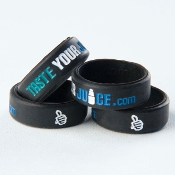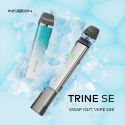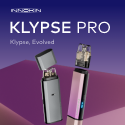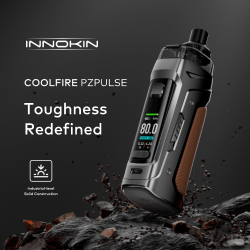There are several things you can do to help your Li-Ion batteries last as long as possible before needing to replace them. Some are easy, some are quite inconvenient. Some have a big effect, some very little. But doing any of them can help slow down the aging and degradation of your batteries.
— Temperature —
- Don’t overheat them. High temperatures are the biggest cause of battery damage and reduced battery life. Anything over about 45°C/113°F, what most would call warm, and your batteries start aging faster. The more time they spend being warm or hot, and the hotter they get, the more damage you’re causing.
- Don’t use them when they’re very cold, below -20°C/-4°F. The chemical reactions in a battery are a lot less efficient at low temperatures leading to poor performance. The sudden heating of the battery if used when cold can cause localized internal heating, possibly damaging the battery.
— Discharging —
- Don’t overdischarge them. Our batteries are rated down to 2.5V or lower but you can extend their life by staying above 2.8V-3.0V***. Going below 2.0V or so leads to metal being plated inside different parts of the battery, eventually causing an internal short circuit and possible bursting of the battery.
- If you accidentally overdischarge your battery below 2.0V immediately recharge it at the slowest rate your charger supports. Once the battery rises up over 3.0V or so you can switch to your normal charge rate.
- If the battery has been at 2.0V for a while then it’s probably damaged. It’s not worth trying to use the “recovery” mode of your charger (if it has it) because the damage can lead to an internal short circuit later.
- Li-Ion batteries do not need to be discharged occasionally all the way down in order to keep them in top condition. Li-Ion batteries do not suffer from “memory”. This is only needed for NiCd (nickel-cadmium) or NiMH (nickel metal hydride) batteries.
- Partial discharging and recharging multiple times is better for long battery life than discharging all the way down to where the mod indicates “low battery” and then recharging.
— Charging —
- Don’t charge a battery that is below 0°C/32°F. It causes metal to be plated inside the battery eventually leading to an internal short circuit and possibly bursting of the battery.
- Where possible, setting your charger to 4.1V will reduce stress on the battery and extend its life. But you will lose 10%-15% of the capacity of the battery.
- Make sure the charger you use turns off once the charge is complete. Check the instructions for the charger you want to use.
- Never use a trickle charger with Li-Ion batteries! The continuous holding of the battery at the trickle charge voltage damages it.
- Don’t overcharge them. To get the longest running possible time from a battery some chargers go up to as high as 4.27V. While this does result in a bit more vaping time before needing to recharge, it damages the battery. Most of the batteries we use are rated at up to 4.25V but even this is quite high. It’s not dangerous until we’re approaching 5V but battery damage starts occurring way below this.
- Without a separate meter monitoring the battery’s highest voltage before the charger stops it’s hard to know what our batteries are actually being charged to. Our best option is to have our batteries spend as little time as possible fully charged and charge them just before using them. This usually isn’t very convenient but it does extend battery life.
- Charging at a slower rate is better, to a point. Most of our 18650 batteries have a “standard” charge rate of 1.0A-1.5A and a “rapid” charge rate of up to 4A. Charging at 0.5A might help extend the life of your batteries a bit but if the batteries are not getting warm at 1.0A then that’s a good compromise between battery life and convenience. Going down to 0.375A or 0.25A won’t help much versus charging at 0.5A.
- Charge 18350’s at 0.5A until you know that they aren’t getting more than a bit warm.
- Charge 26650’s at 1.0A until you know that they aren’t getting more than a bit warm. The better 26650’s can be charged at up 2.0A without adversely affecting battery life.
— Miscellaneous —
- Storing batteries in the refrigerator doesn’t make much of a difference in battery life unless you live in an area with high temperatures year around. It’s not dangerous to refrigerate them but be sure to let them come to room temperature before opening whatever airtight wrapping/container you have them in.
- If a battery wrap becomes damaged, replace it immediately. Replace the top insulator ring if it’s also damaged.
- Every time you buy batteries also buy battery boxes or sleeves, wraps, and top insulator rings. You…will…need…them.
— Additional Information —
***This is the resting voltage, NOT the voltage “under load” that the battery drops to when being used. If your mod stops firing when the battery drops to 3.2V the battery can rise back to to 3.5V or even higher after resting for a while. This “resting voltage” is the important voltage, the one to be used when determining how low you are really discharging your batteries.
While stopping at 3.4V, 3.6V, or even higher might extend battery life a bit you are missing out on a lot of additional vaping time that you could use before needing to recharge. That additional vaping time can be enjoyed every day for, at most, just the cost of one extra set of batteries a year. Stopping at these higher voltages won’t hurt the battery though. Just let the batteries sit for an hour before charging to see what their true resting voltage is when deciding how low you want their voltage to go in your mod.
Know your mod, know your batteries, and vape safe.














 Store
Store












